[ad_1]
The newest adventure motorcycles may feature the most recent motors, technologies, and styles, but they also come with the current price tags! The primary concern is the fact that you’re constantly having to catch up because everything is outdated in a matter of years. Such are the times we are living in.
However, if you choose an older adventure bike, you not only get an ADV with a lot of potential, but also a model that costs much less than its brand-new equivalent. The adventure riding community is always changing, so it’s important to acknowledge and value these older models that have made a lasting impression on the less traveled path. Though they may not be new, they still do a pretty good job at taking you places.
Even in today’s times, these motorcycles have characteristics that set them apart, even if they may not have received as much praise in the past. Let’s go through the top 10 classic adventure bikes that are built to last a lifetime.
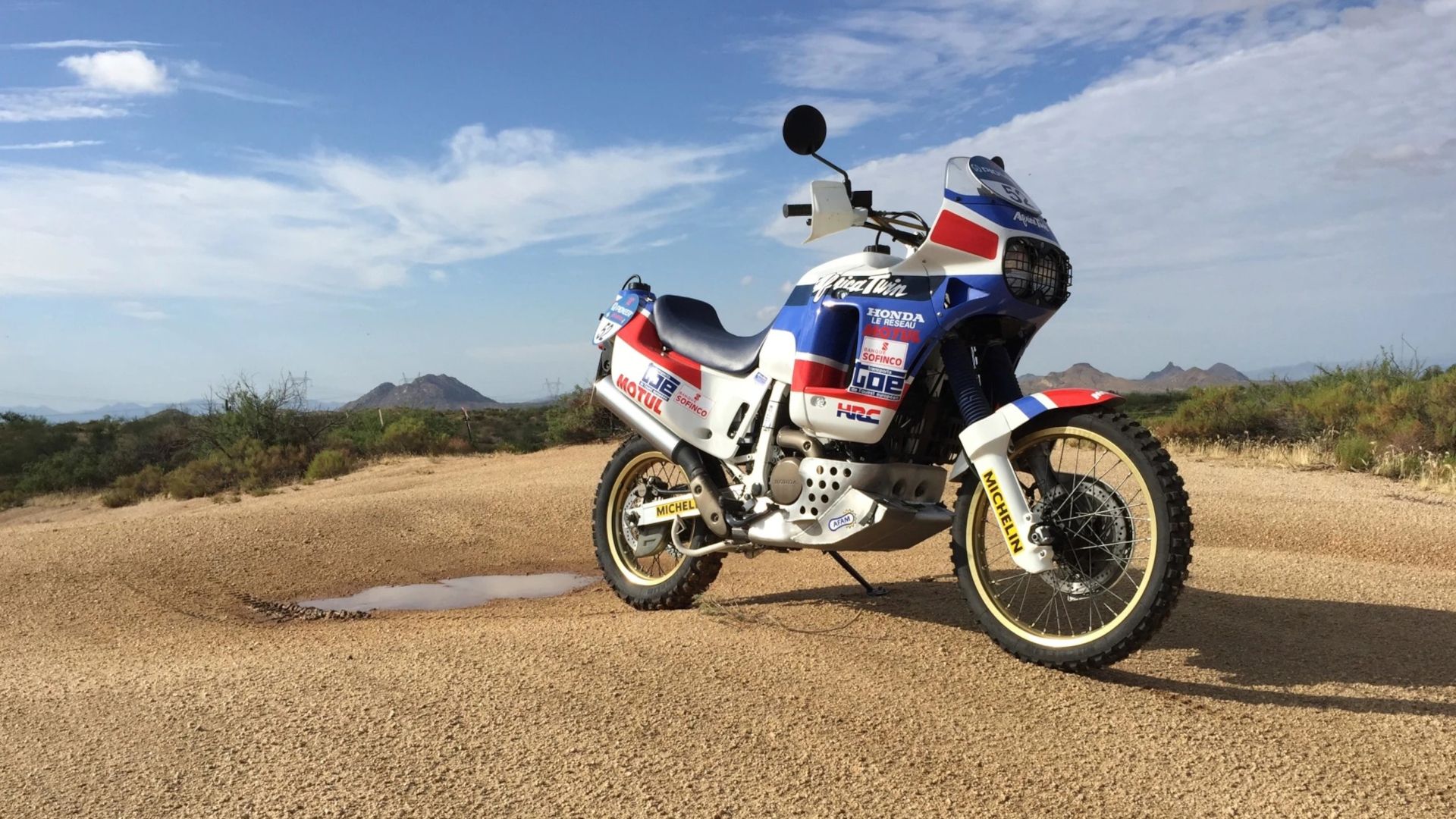
10 Classic Adventure Bikes That Defined An Era
If the market today is dominated by BMW and KTM, it wasn’t always that way
Looking at the data from OEM websites, as well as authoritative websites like CycleWorld and MotorcycleNews, we have put together this list with the most accurate and relevant information about these classic adventure motorcycles. The motorcycles on this list are ranked based on their initial production years from oldest to newest.
10 BMW R100 GS Paris-Dakar
Production Years: 1987 – 1996
BMW almost alone created the adventure bike idea, and their heavily modified R80 GS model won the Paris Dakar in 1981, ’83, ’84, and ’85. However, it wasn’t until 1990 that the manufacturer decided to release a commemorative duplicate model, the R100 GS Paris Dakar, for the masses.
The R100 GS P-D from 1990 was a factory-original bike, with a big 9.2 gallon (35 liters) petrol tank, just one seat, a luggage rack, crash bars, an engine bash plate, and long fenders. While previously, conversion kits were available for the normal R80 GS and R100 GS models, the introduction of this bike was a real game changer. The best thing was that for longer trips you could effortlessly add panniers – something not most other ADVs offered at that time.
Performance Specifications
|
Displacement |
980cc |
|
Engine Type |
Boxer twin cylinder |
|
Power |
60 HP |
|
Torque |
56 LB-FT |
|
Weight |
519 pounds |
Pros:
- Iconic adventure bike with a legendary reputation.
- Robust build quality and durable construction.
- Capable off-road performance.
Cons:
- The suspension setup was too soft for the paved roads.
- Limited availability of replacement parts.
9 Honda Transalp XL600V
Production Years: 1987 – 1999
Honda must have thought that their ADV lineup was woefully inadequate after observing what BMW had been accomplishing with theirs. Africa Twin was yet to come into production, and Honda was having difficulty breaking into the expanding ADV market. Their entry point came in the form of the Transalp.
By no means was it flawless. In fact, it was undoubtedly more street-focused than anything else. However, it was dependable, comfortable, and gradually enjoyed its own following. After that, it became so popular that Honda decided to reintroduce it to the market. So much so that the new model’s appearance is reminiscent of the 1980s original, but its price — just under $10,000 — will be the deciding factor in the present situation.
Performance Specifications
|
Displacement |
647cc |
|
Engine Type |
6v V-twin |
|
Power |
53 HP |
|
Torque |
41 LB-FT |
|
Weight |
421 pounds |
Pros:
- Lightweight and nimble.
- Comfortable upright riding position.
- Honda reliability and fuel efficiency.
Cons:
- Limited off-road capability compared to dedicated adventure bikes.
- Older design with fewer modern features.
8 Honda XRV750 Africa Twin
Production Years: 1989 – 2003
The original XRV750 Africa Twin should not be overlooked, even though the CRF1000L Africa Twin of today may have revived the Africa Twin brand. Honda produced the Africa Twin from 1989 until 2003, and it still enjoys a cult following. The original 650cc twin, which was virtually an entirely new design, was superseded by the 750cc Africa Twin.
It also had a larger engine that generated 5 more horsepower and an additional front disc that enhanced braking. But being a more mass-produced bike, the 750 wasn’t quite as graceful or uncommon as the previous ‘HRC’ 650. However, now in 2024, we can declare with some degree of confidence that it was a bike built to last ages.
Performance Specifications
|
Displacement |
742cc |
|
Engine Type |
Liquid-cooled, V-twin, SOHC |
|
Power |
60 HP |
|
Torque |
45.7 LB-FT |
|
Weight |
407.8 pounds |
Pros:
- Legendary adventure bike known for its durability.
- Strong off-road performance.
- Comfortable ergonomics for extended rides.
Cons:
- It wasn’t as stylish as the 650.
- Limited availability of replacement parts.
- Relatively heavy.
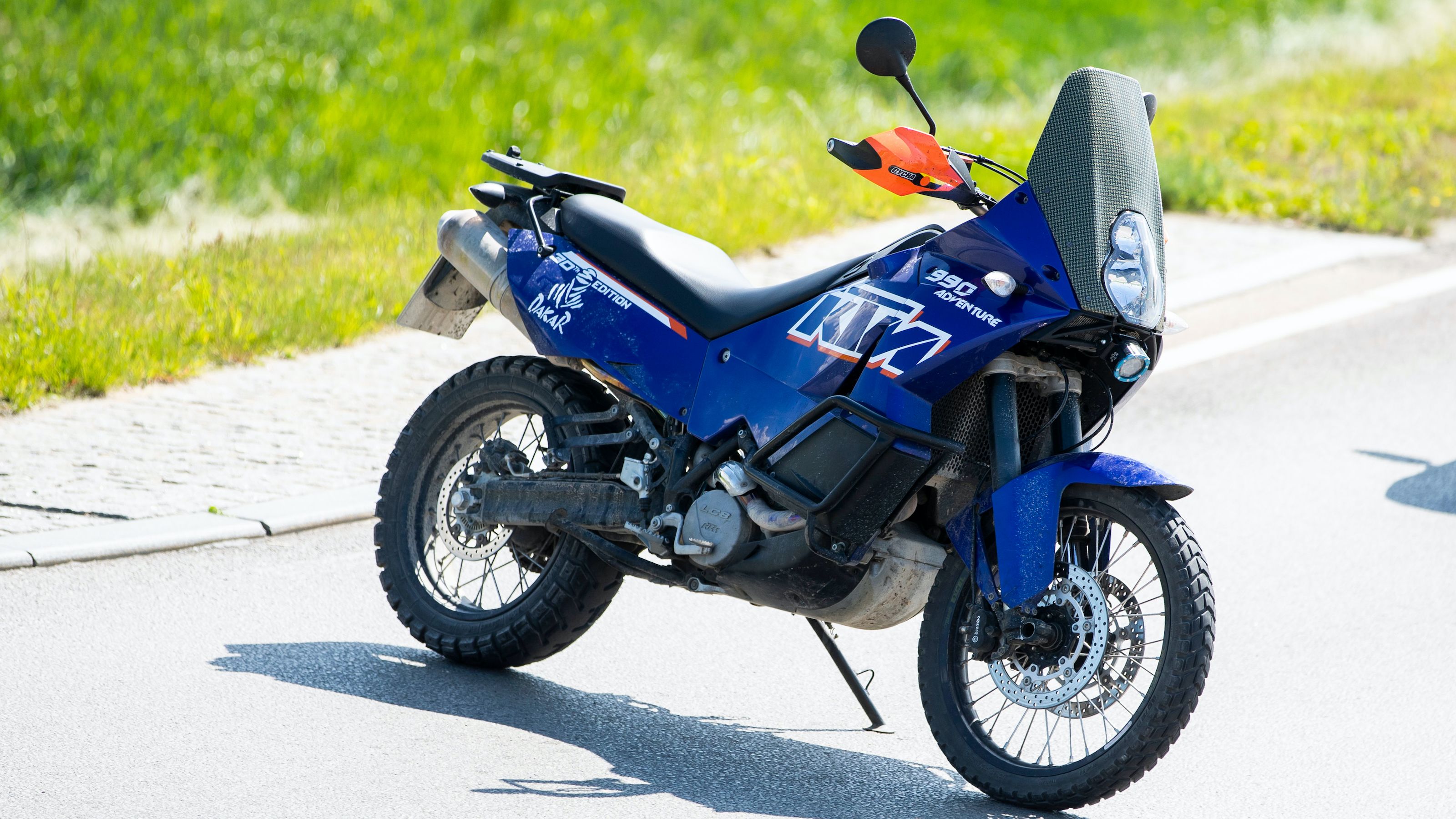
Best Adventure Bikes Of The 2000s
Fun and practicality became the new focus in the new millennium
7 Kawasaki KLR650 Tengai
Production Years: 1990 – 1992
Though it comes in a more recent incarnation, the powerful Kawasaki KLR 650, the Tengai had its own fans back in the day. It is basically a reworked KLR650, the most durable and long-lasting large single-cylinder adventure bike accessible at those times. All that separated it from the regular KLR was a bigger, 6.3-gallon (24-liter) petrol tank and an integrated fairing.
Now in 2024, its unadulterated, tractor-like sensation still takes you back to bygone eras when bikes were straightforward yet incredibly powerful. The KLR 650 is an underappreciated bike for adventure riders who prefer a practical approach to exploration because of its well-proven durability and simple design.
Performance Specifications
|
Displacement |
885cc |
|
Engine Type |
Inline three-cylinder |
|
Power |
85 HP |
|
Torque |
60.5 LB-FT |
|
Weight |
461 pounds |
Pros:
- Affordable and widely available.
- Versatile for both on-road and off-road adventures.
- Simple and easy to maintain.
Cons:
- Limited power.
- Basic suspension setup.
- Vibrations at higher speeds.
6 Cagiva Elefant 900ie Lucky Explorer
Production Years: 1990 – 1992
The 1985 takeover of a faltering Ducati provided Cagiva access to the company’s lightweight, air-cooled V-Twin engine, and the brand quickly took advantage of the chance. It was never intended to be anything more than an engine for road bikes, but it functioned well in the Cagiva Elefant, which went on to win the Paris-Dakar not once but twice, in 1990 and 1994.
The trail bike frame performed well, and the imposing Marzocchi/Öhlins equipment was sturdy and responsive. Its 904cc, 90° V-twin produced 68 horsepower and 57 pound-feet of torque. The Elefant provided an energetic ride overall and is a bike that can still go for a fortune if you’re a collector of the bygone days.
Performance Specifications
|
Displacement |
904cc |
|
Engine Type |
90° V-Twin cylinder |
|
Power |
68 HP |
|
Torque |
57 LB-FT |
|
Weight |
458 pounds |
Pros:
- Unique and distinctive design.
- Capable of handling a variety of terrains.
- Comfortable for long-distance touring.
Cons:
- Limited availability.
- Heavy build
- Pricey maintenance.
5 Yamaha XTZ660 Tenere
Production Years: 1991 – 1999
The Yamaha Tenere XTZ660 was at the height of its popularity in the 1990s. In comparison to the mainstream competitors, it was reasonably priced and a great adventure bike with substantial off-road potential. It had a tough design, which is still true of the offerings available today. Typical Yamaha!
Global trips, however, were not really on the cards for the XTZ660 because of the Tenere’s 407-pound dry weight and its vibrating single-cylinder mill, which made hauling about difficult. Nevertheless, it managed to set itself apart from the competition with useful features like strong crash guards and front towing hook — items that, even now, are practically non-standard on most ADVs.
Performance Specifications
|
Displacement |
660cc |
|
Engine Type |
Air-cooled, Single cylinder, SOHC |
|
Power |
46 HP |
|
Torque |
56 LB-FT |
|
Weight |
407 pounds |
Pros:
- Lightweight and agile, suitable for off-road adventures.
- Relatively simple and reliable design.
- Comfortable ergonomics for long rides.
Cons:
- Moderate power compared to its competitors.
- Limited features.
- Maintenance was tricky and cumbersome.
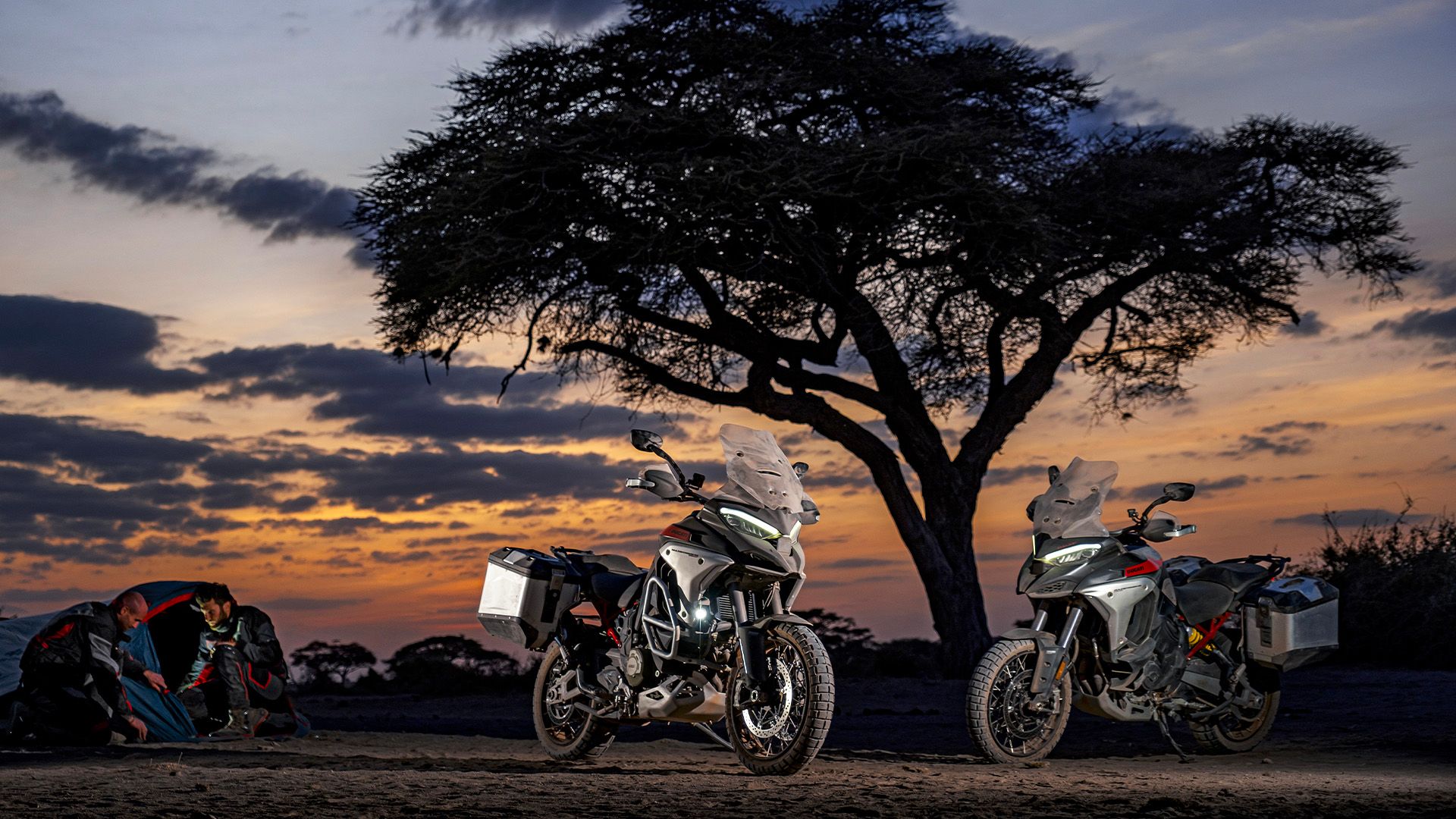
The Evolution Of Adventure Bikes: From R80 G/S To Multistrada V4
From simple dual-sports to feature-rich, do-it-all tourers, adventure bikes have come a long way to become the top choice for the modern rider
4 Moto Guzzi Quota
Production Years: 1992 – 2001
Almost all manufacturers were tempted to a Dakar-inspired style by the late 1980s, even if their final production-ready trims were unsuitable. But possibly the most notorious and absurd adventure motorbike ever made that looked like a Dakar ADV was the Quota by Moto Guzzi.
It came equipped with a large fairing, off-road wheels, a lengthy suspension, and a 949cc transverse V-twin. Sadly, it was labeled as being too heavy, unwieldy, towering, and awkward to ride. Nevertheless, it was an extremely striking object, and its ten-year manufacturing run indicated that a sizable number of people at the time ought to have purchased it.
Performance Specifications
|
Displacement |
949cc |
|
Engine Type |
Air-cooled, transverse V-twin, OHC |
|
Power |
69.06 HP |
|
Torque |
58.27 LB-FT |
|
Weight |
546.75 pounds |
Pros:
- Unique transverse V-twin engine design.
- Italian styling and craftsmanship.
Cons:
- Limited availability and potential challenges in finding parts.
- Heavy.
- Not the most comfortable ergonomics.
3 Triumph Tiger 900 “Steamer”
Production Years: 1993 – 1998
The 1993 Tiger 900, also referred to as “Steamer,” was another of those Dakar-inspired models. It was a version of the British brand’s adaptable three and four-cylinder motorcycles, intended with the assistance of a long travel suspension that came with MX bars, off-road knobby tires, and an acrylic fuel reservoir that was recently legalized.
Thanks to its torquey triple, the bike produced 85 horsepower alongside Triumph‘s usual superb handling qualities, meaning it was a fine do-it-all motorcycle. After all, this is the motorcycle that originally launched the Tiger 900 series. Over time, this series did manage to keep up with technological and design developments, although occasionally it is eclipsed by larger models in the Tiger lineup.
Performance Specifications
|
Displacement |
885cc |
|
Engine Type |
Liquid-cooled, transverse three-cylinder |
|
Power |
104 HP |
|
Torque |
67.86 LB-FT |
|
Weight |
485 pounds |
Pros:
- Strong and torque-rich three-cylinder engine.
- Good handling characteristics.
- Modern features and technology.
Cons:
- Higher maintenance costs.
- Heavy weight for off-road.
2 BMW R 1150 GS
Production Years: 1999 – 2004
The 1150 GS was powered by a 1,130cc engine that produced 85 horsepower and 71 pound-feet of torque. It was so well-liked that many people still own one and have traveled a considerable number of miles on it, whether for everyday commuting or long adventure riding. After all, the GS impact originated with the BMW R 1150 GS.
Even though it wasn’t all that different from its 1,100cc predecessor, it quickly became very famous. It was comfortable and competent, and it handled far better than a motorcycle with its big, commanding stance should have, but isn’t that still the case for its current trim level? In any case, it’s great to see how far the BMW GS has come.
Performance Specifications
|
Displacement |
1130cc |
|
Engine Type |
Oil and liquid-cooled, two-cylinder boxer, SOHC |
|
Power |
85 HP |
|
Torque |
71 LB-FT |
|
Weight |
511.47 pounds |
Pros:
- Powerful boxer engine with good torque.
- Comfortable for long-distance touring.
- BMW build quality and reliability.
Cons:
- Heavy.
- Higher maintenance costs.
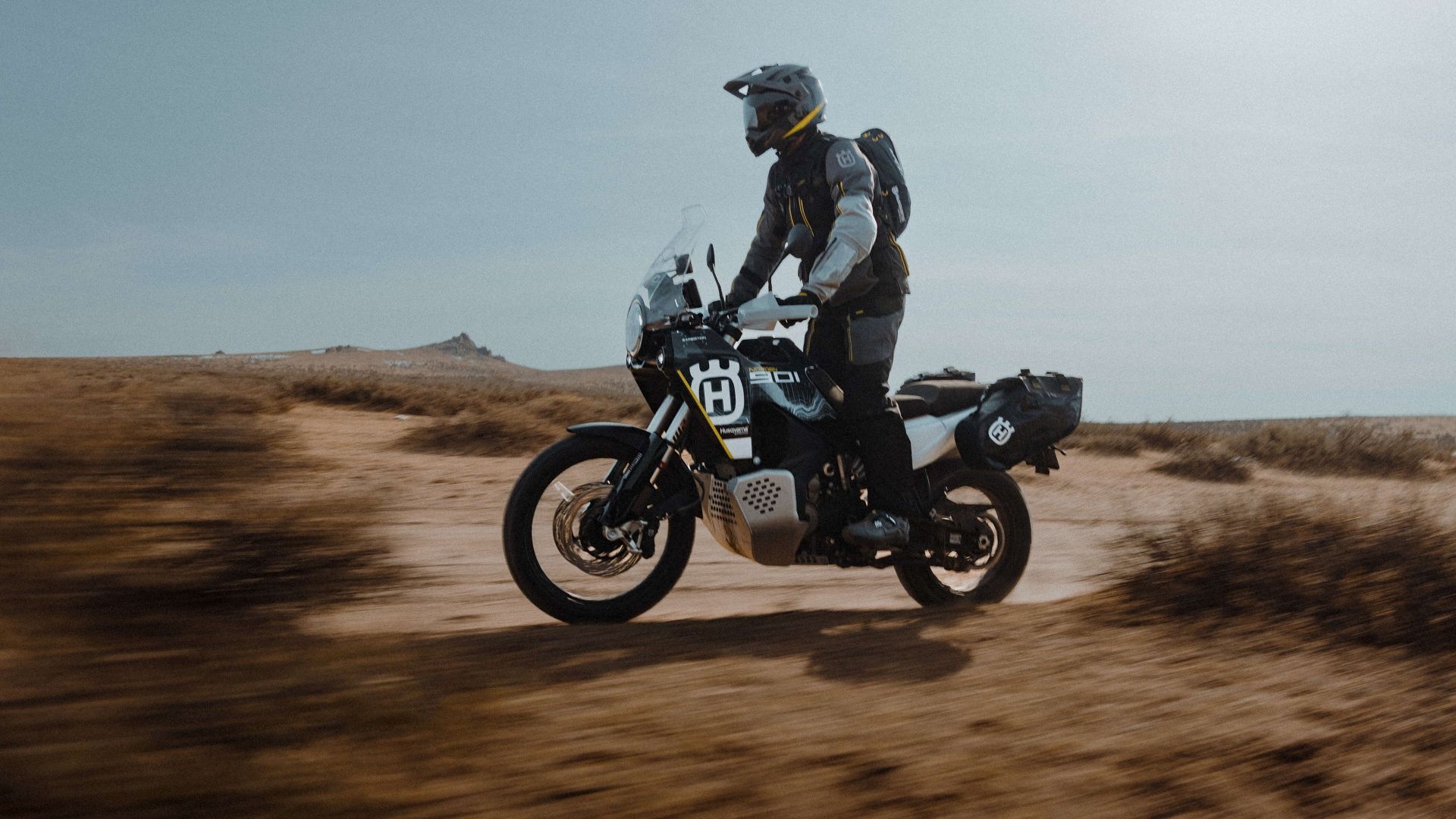
Most Powerful Adventure Bikes Under 1000cc
These are the most powerful middle-weight ADVs currently on the market
1 Aprilia ETV 1000 Caponord
Production Years: 2001 – 2013
Aprilia is still widely remembered because of the potential Caponord had back in the day. It had a great 1000cc V-twin engine that produced adequate torque for adventurous activities and a healthy 98 horsepower. It came with an industry-leading aluminum beam frame that ought to have caused waves in the market, but a choppy ride and sporadic build quality issues kept that from happening.
The Italian brand’s final product quality has improved much since then, but the Caponord will always be remembered as a squandered chance. The nicest thing about riding this ADV is that it senses when you’re riding hard, which causes the damping to change to be more sporty based on the torque you want. So, even today, the ETV1000 Caponord is a fantastic big off-road motorbike with exceptional overall performance, despite its imperfections.
Performance Specifications
|
Displacement |
997.6cc |
|
Engine Type |
Liquid-cooled, V twin, DOHC |
|
Power |
98 horsepower |
|
Torque |
71.5 pound-feet |
|
Weight |
474 pounds |
Pros:
- V-twin engine generates decent power.
- Comfortable for both on-road and off-road riding.
- Unique design with Italian flair.
Cons:
- Limited availability.
- Heavier compared to its competitors.
- Questionable build quality.
[ad_2]
Source link

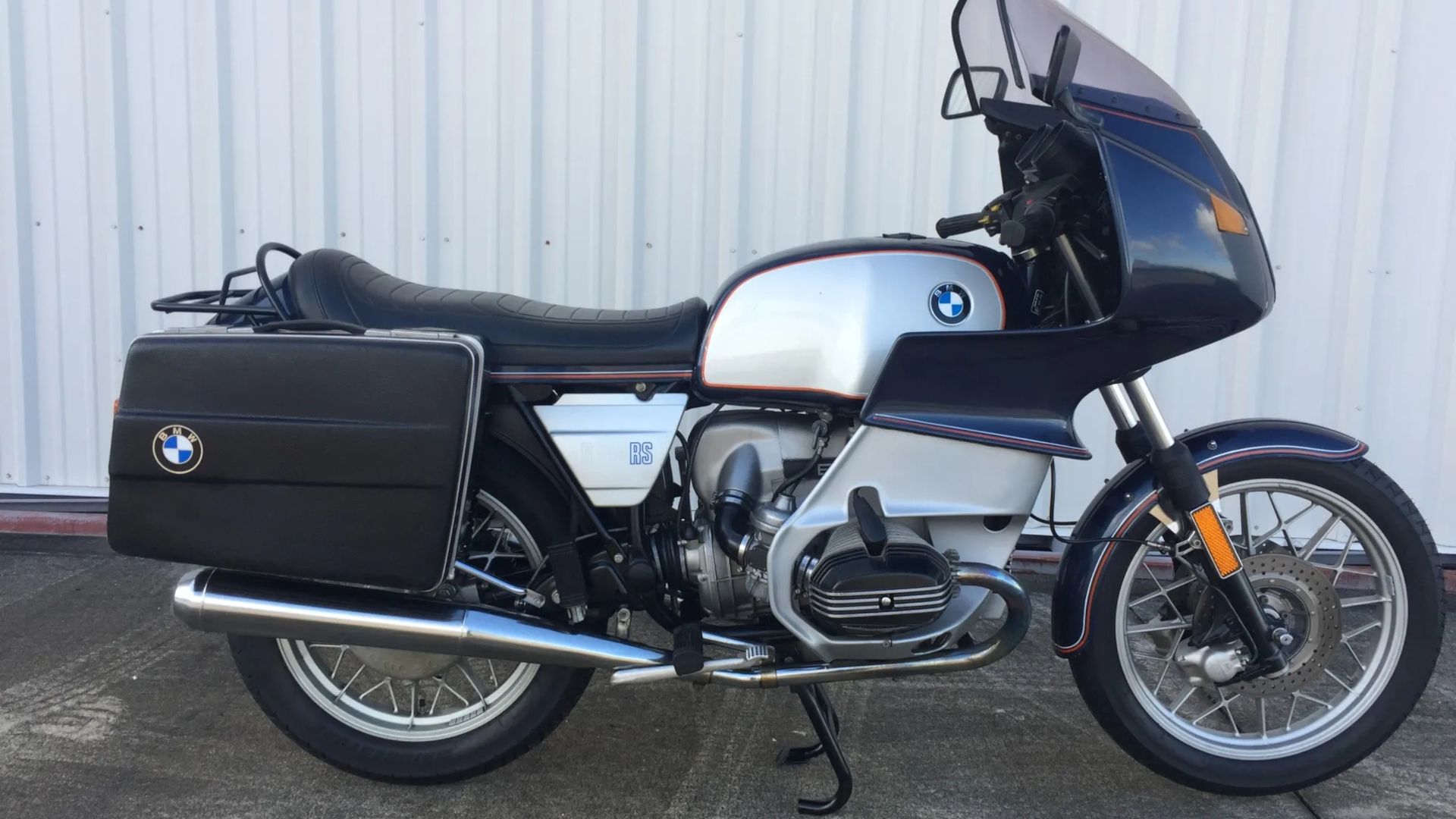
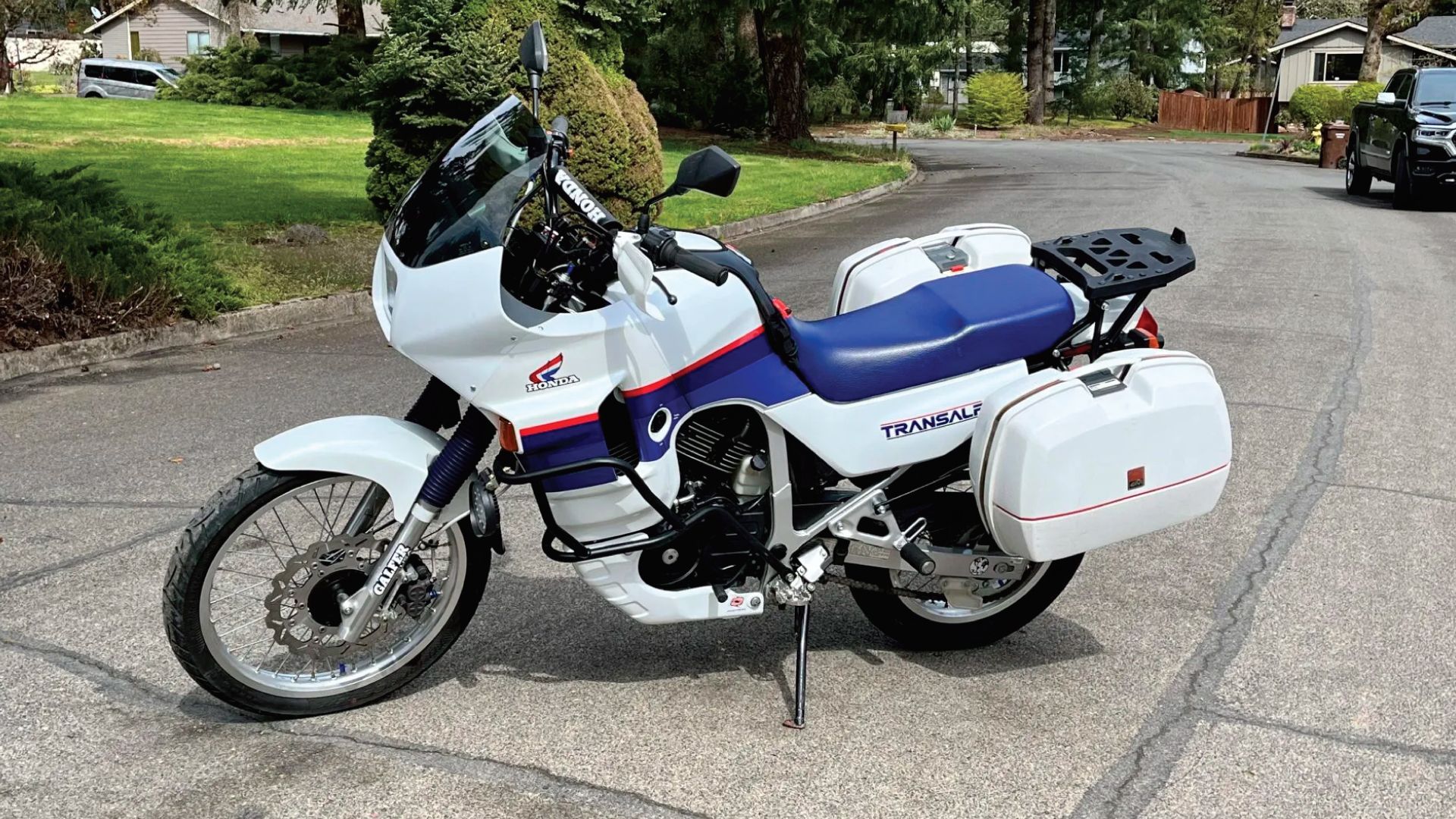

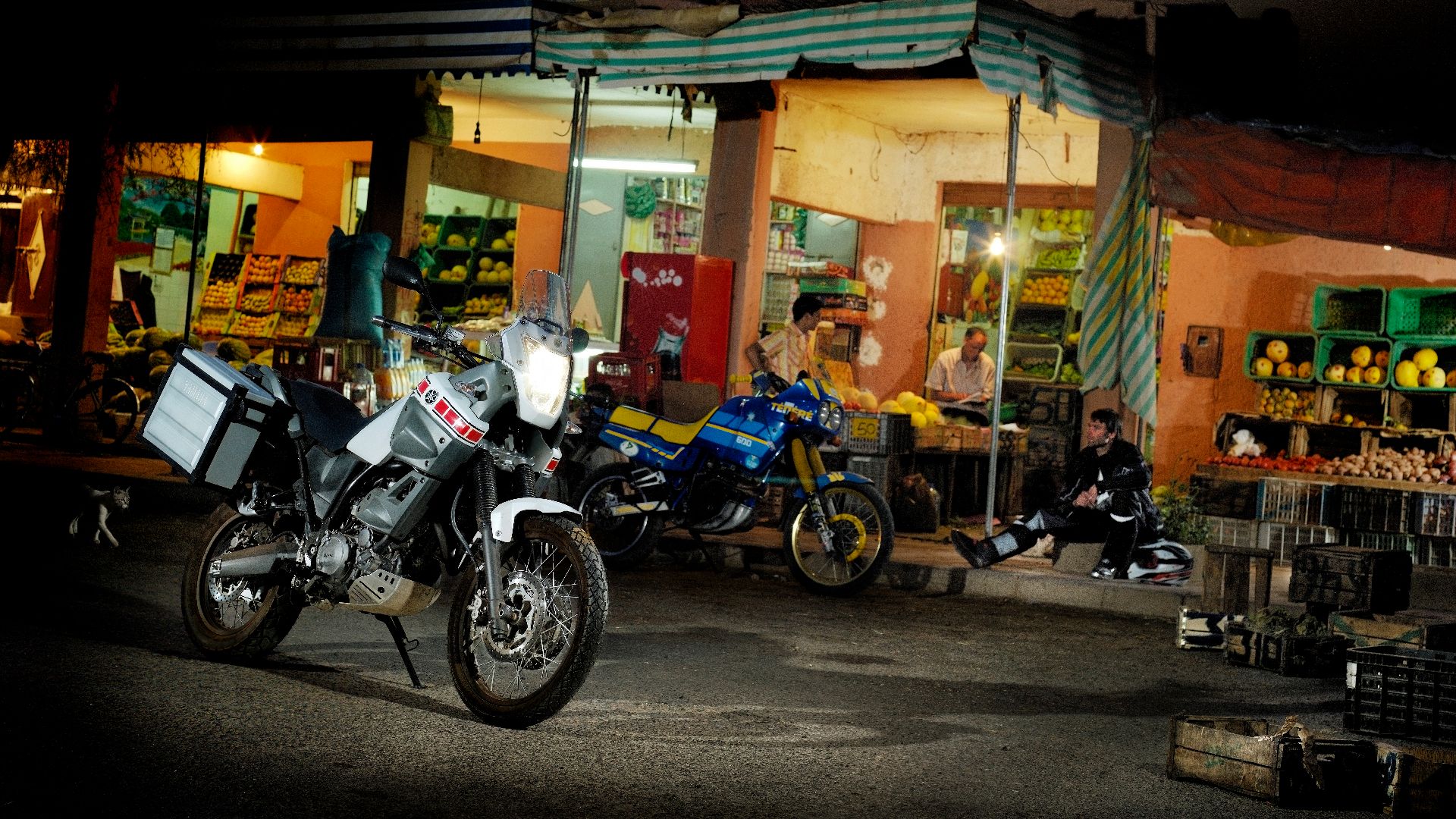
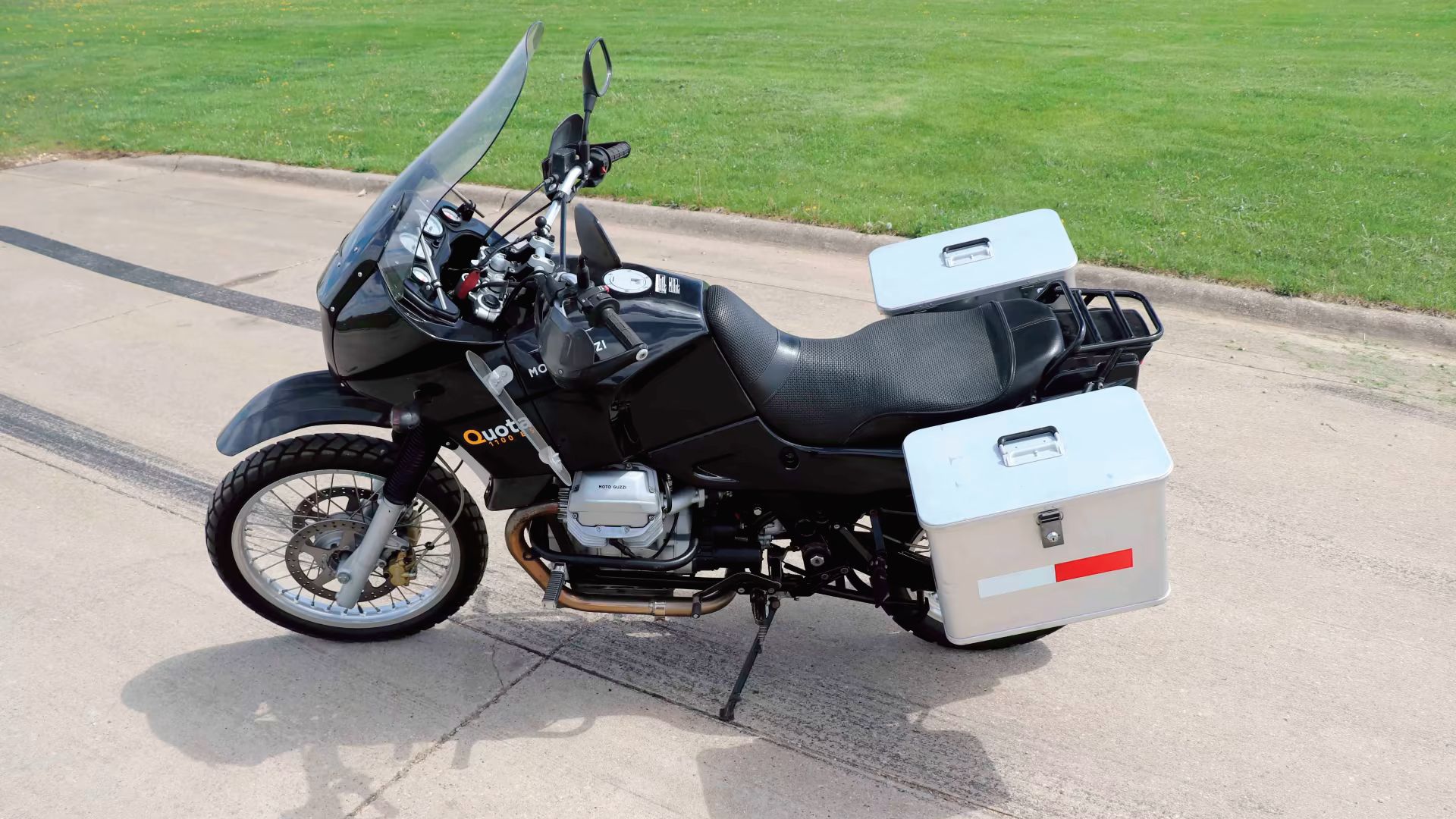

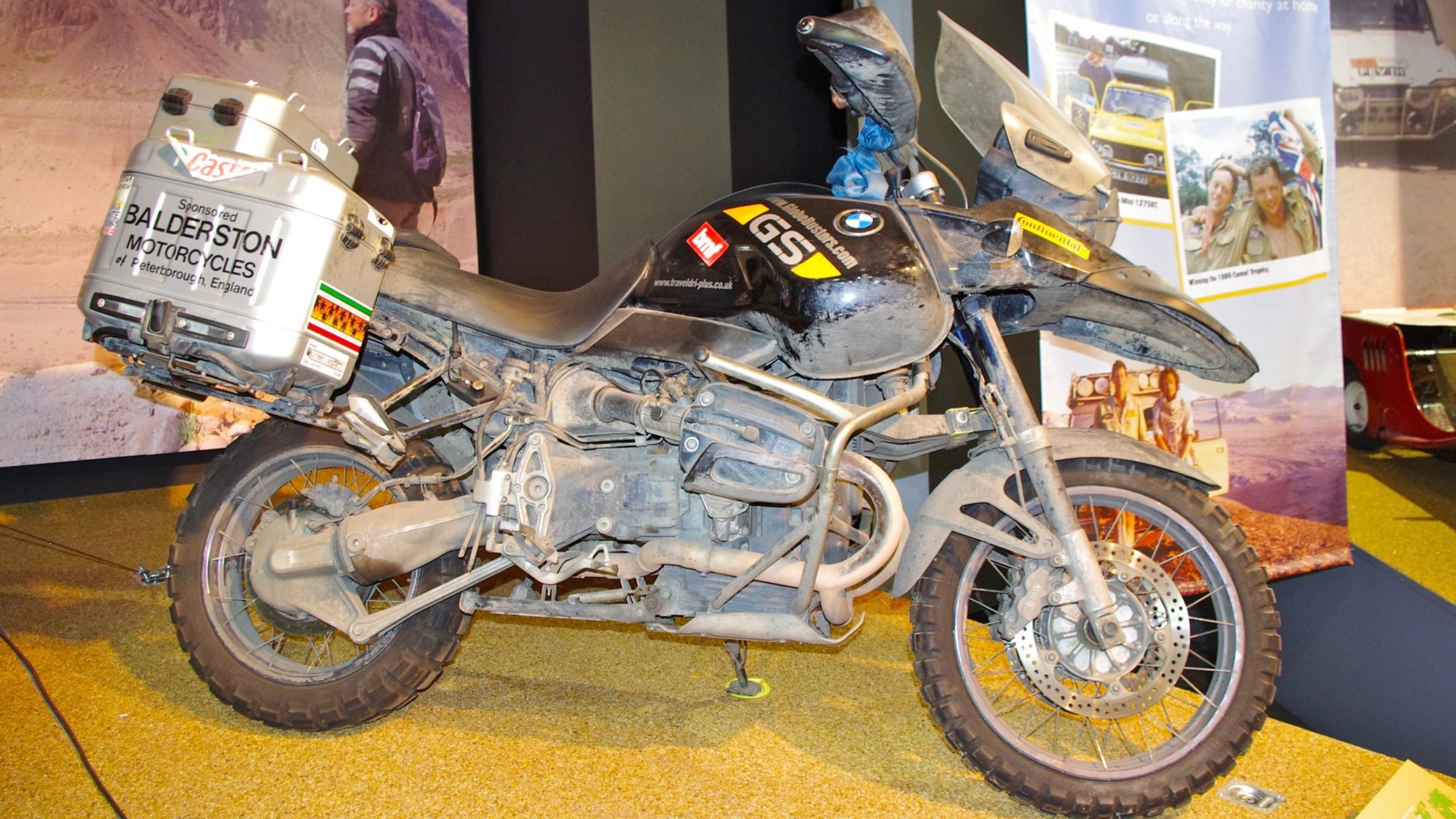

Leave a Reply
You must be logged in to post a comment.